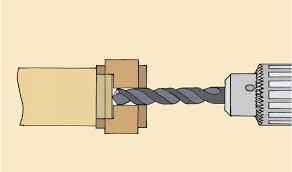Latest posts
What’s going on at parkrun?
Virtue-signalling all the way to the bank
Bud Light: brand purpose or virtue-signalling?
The Coddling of the American Mind, by Greg Lukianoff and Jonathan Haidt
Belonging, by Owen Eastwood
Such a simple thing
The Long Win, and The Scout Mindset
The Cult of We by Eliot Brown and Maureen Farrell
Coffee and covid modelling
John Lewis: so right-on it’s wrong
By theme
Marketing strategy
Insight & metrics
Innovation & inspiration
Brand & positioning
Marketing communications
Business purpose
Leadership
By industry sector
Financial services
Retail
FMCG
Technology & start-ups
Consumer services
Business to business
Other sectors
By type
Books
Comment
Quotes
Thought leadership
Everyone’s talking about insight. So what is an insight? It is a discovery about the market which can be acted upon to create competitive advantage. It’s usually a realisation, not a direct data point. Numbers may prompt this realisation, but it has to be thought and articulated before it starts to be useful. It’s the “aha” statement that gets passed around, and enables a business to create shared understanding and take action.
It seems like everyone’s doing insight too. Market research departments are now insight units. I know a market research director who insists that everything her team does is insight. And every word I write is poetry. What her team does is mission-critical. But they devalue it if they insist it is all insight. It’s mostly useful information, which is not the same thing. Not all market or consumer information, however true, makes an insight. On the contrary, it often takes a lot of wading through information of various kinds before the insight arrives.
The down-side of the market research department commandeering insight is that it suggests insight comes only from market research-led initiatives. The aha moment, the really significant, game-changing insight, will probably hit you as a realisation born of cumulative inputs from more than one source. It’s important to be open to it, wherever you are when it strikes. That can make the direct source of an insight hard to pin down, which agitates those who wish to be data-driven. But anything really worth acting on probably isn’t a simple reported number from a survey. The why behind that number, on the other hand, could unlock something with major implications.
How do you know it’s a genuine insight? First, the test of whether it can be acted upon, not just to change something but to create competitive advantage. Second, that moment when the realisation arrives is a bit like falling in love. There may be a few false starts but you know the real thing when it happens.
In business, one or two profound insights can unlock market understanding and lead to growth. Occasionally they can be transformational. The entire sharing economy is based on a simple insight: most of us own a lot of stuff we’re not using all the time. For some businesses, like Airbnb, or parkatmyhouse, that meant getting people to rent them out. For others, like Zipcar, it meant an alternative to the conventional ownership model. Hot desking is based on essentially the same insight applied in offices.
Here are a few of my favourites.
- The famous statement attributed to Theodore Levitt, “People don’t want to buy a quarter-inch drill. They want a quarter-inch hole.” That changes your competitive set, and recognises that some people, even drill-buyers, aren’t that interested in drills.
- Dyson’s realisation that letting people see the dust and dirt collecting inside their vacuum cleaner makes cleaning more satisfying, and proves the machine is doing its job. It’s initially counter-intuitive because we are repulsed by the dust when emptying the cylinder.
- From behavioural economics, the discovery that signage that reports other people’s bad behaviour has a norming effect, making us more likely to do likewise. (See the story of the Petrified Forest National Park, Arizona, as reported in Thaler & Sunstein’s book Nudge.) Hospital clinics and doctors’ surgeries should stop putting up signs telling us how many people missed their appointments last month; they’re only making it more ok for us to miss ours.
A worthwhile insight will often seem obvious once articulated, as these three do. As Levitt shows, sometimes the most significant realisation is that most people don’t think much about your brands, or your category, or even care that much about which brand they buy. Chances are, they’ll never say that directly; in market research people generally try to be helpful, and polite. A bit of common sense is needed to read the reality.
More posts on insight:
Latest posts
What’s going on at parkrun?
Virtue-signalling all the way to the bank
Bud Light: brand purpose or virtue-signalling?
The Coddling of the American Mind, by Greg Lukianoff and Jonathan Haidt
Belonging, by Owen Eastwood
Such a simple thing
The Long Win, and The Scout Mindset
The Cult of We by Eliot Brown and Maureen Farrell
Coffee and covid modelling
John Lewis: so right-on it’s wrong
By theme
Marketing strategy
Insight & metrics
Innovation & inspiration
Brand & positioning
Marketing communications
Business purpose
Leadership
By industry sector
Financial services
Retail
FMCG
Technology & start-ups
Consumer services
Business to business
Other sectors
By type
Books
Comment
Quotes
Thought leadership
